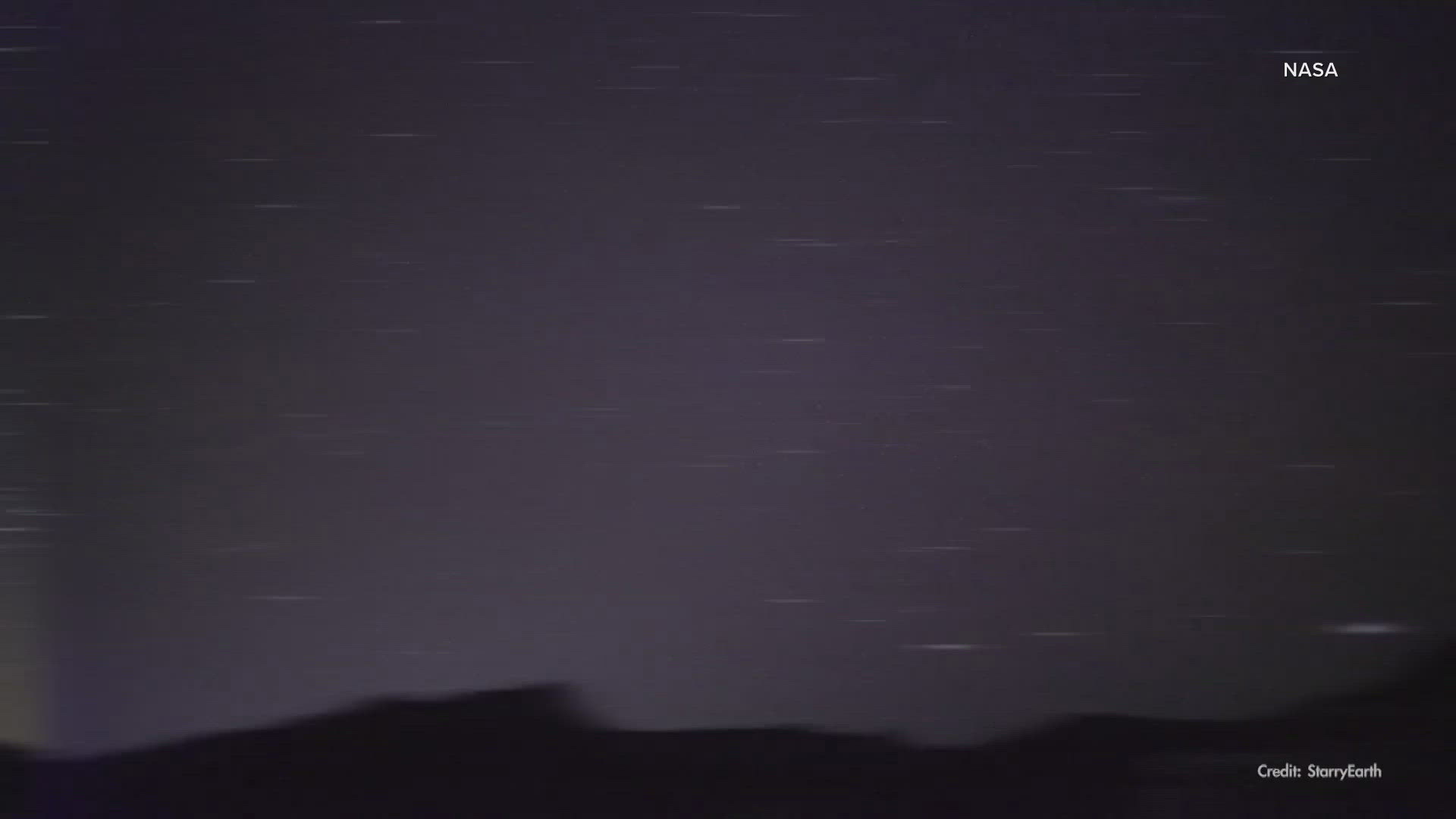TEMPLE, Texas — Get ready for a show, one of the best meteor showers of the year is set to kick off this July.
The annual Perseid meteor shower, considered the best meteor shower of the year, according to NASA, became active on July 14, with its peak forecasted for the night of Aug. 12 into the early morning of Aug. 13, said the Administration.
According to an article by Joe Rao of Space.com, the first meteors of the shower typically begin to appear in the later part of July, with a few possibly being seen per hour, and chances increasing into the second week of August.
Daisy Dobrijevic of Space.com says 2024 will be an especially good year to catch the Perseid shower, because even though the moon will be 50% illuminated, it will set at midnight on Aug. 12, leaving the skies darker and more prime for seeing meteors until dawn.
Rao says the Perseid shower is capable of producing 50-100 "fast, bright meteors" per hour for observers during its peak, with a few "straggler" meteors being seen as late as Aug. 18.
NASA describes the meteors in the Perseid shower as "swift and bright", leaving long "wakes" of light and color behind as they streak through the sky.
The name of the Perseids comes from the Perseus constellation, said NASA, which is considered the "radiant" of the shower, or the point where the meteors typically seem to appear from. More on the constellation and how to find it can be found at this link.
Perseus is not the actual cause of the shower however. According to NASA, the meteors are actually debris from the comet 109P/Swift-Tuttle.
You won't need any telescopes or other equipment to spot a meteor during the Perseid peak on Aug. 12, as meteors will be visible to the naked eye, according to Dobrijevic. The best way to take in the shower is to find the darkest possible viewing place, lean back and watch as much of the night sky as possible, said Dobrijevic.
NASA says the best time to view the shower is in the pre-dawn hours, though meteors could be visible as early as 10 p.m.
More information on the shower and how to see it can be found on NASA's website at this link and on Space.com at this link.
More from 6 News:

